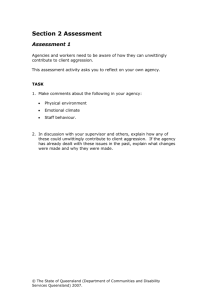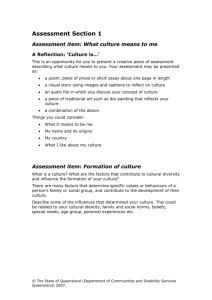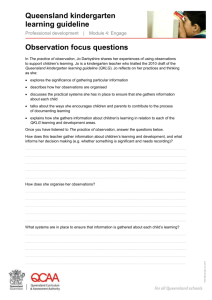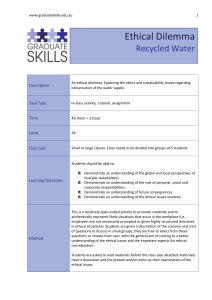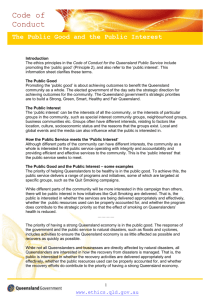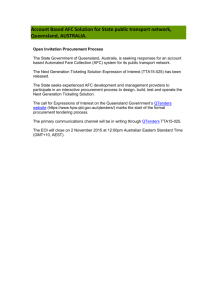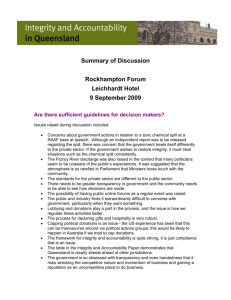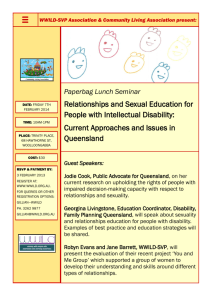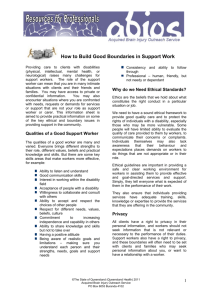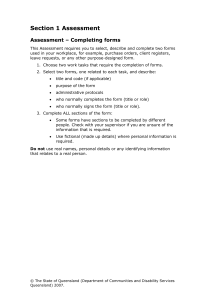Section 3 activities - QCOSS Community Door eTraining
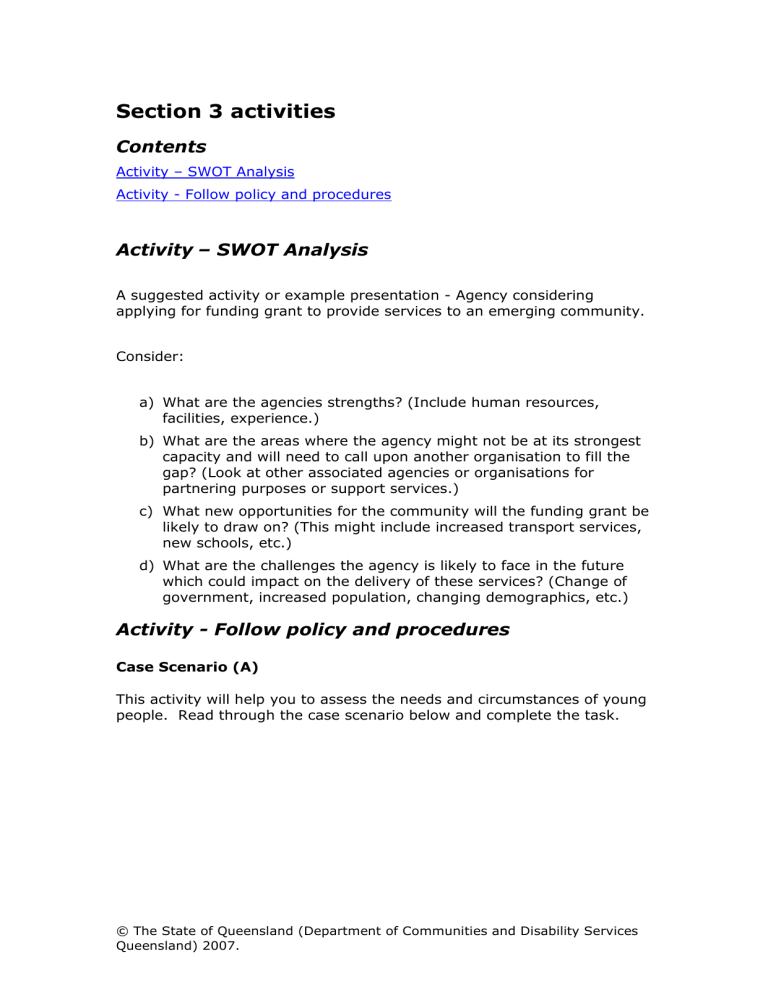
Section 3 activities
Contents
Activity - Follow policy and procedures
Activity – SWOT Analysis
A suggested activity or example presentation - Agency considering applying for funding grant to provide services to an emerging community.
Consider: a) What are the agencies strengths? (Include human resources, facilities, experience.) b) What are the areas where the agency might not be at its strongest capacity and will need to call upon another organisation to fill the gap? (Look at other associated agencies or organisations for partnering purposes or support services.) c) What new opportunities for the community will the funding grant be likely to draw on? (This might include increased transport services, new schools, etc.) d) What are the challenges the agency is likely to face in the future which could impact on the delivery of these services? (Change of government, increased population, changing demographics, etc.)
Activity - Follow policy and procedures
Case Scenario (A)
This activity will help you to assess the needs and circumstances of young people. Read through the case scenario below and complete the task.
© The State of Queensland (Department of Communities and Disability Services
Queensland) 2007.
A young female aged 15 years comes into the youth agency where you work, demanding to see you. She seems very anxious and tells you that she had sex for the first time last night while at a barbecue on the beach and is now really worried that she might have a sexually transmitted infection or be pregnant. This young person is already a client of your service and has taken part in other agency programs.
From your previous involvement with this girl, you are aware that she is under the care of the Department of Child Safety and is currently staying in a local youth refuge/shelter after her foster home placement broke down.
Task
Specify any legal, procedural or ethical issues you would need to take into account when responding to this young person’s needs.
Case Scenario (B)
This activity will help you to clarify your professional responsibilities and obligations both to clients and to the agency that employs you.
The case scenario below brings about a common ethical dilemma which presents a challenge to youth workers in the course of their work. This common ethical dilemma centres on notions of confidentiality and discretion.
© The State of Queensland (Department of Communities and Disability Services
Queensland) 2007.
A young female with a disability aged 18 years with whom you have developed a relationship of trust and mutual respect asks you to look after some of her personal possessions for safe keeping. The young person tells you that she wants you to do this for her as she has an abusive father who is very strict. He constantly checks through her personal possessions at home and she feels that this is an invasion of her privacy. The personal belongings she has asked you to look after include a diary, some clothing, cosmetics, medical items and toiletries.
From previous involvement, you are aware of the family circumstances of this young person. This young person regularly visits your service and has been an active participant in various activities. The organisation you work for has a strong policy of not allowing clients to leave bags or other personal belongings unattended in the agency.
Task
The task you are required to complete is to explain how you would go about resolving this ethical dilemma, while still maintaining clear and honest relationship with the person who is your client including their family, and while still adhering to the policies and procedures of your organisation.
© The State of Queensland (Department of Communities and Disability Services
Queensland) 2007.
